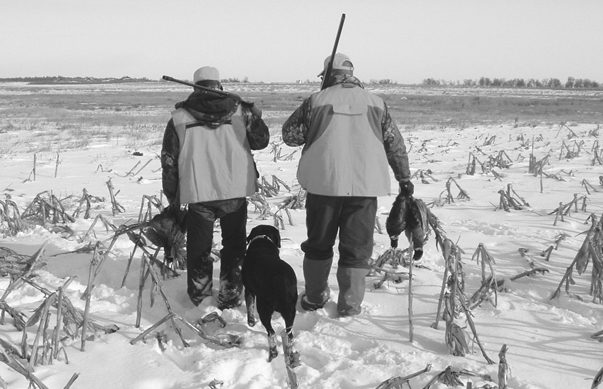There is good news and bad news coming out of South Dakota, the nation’s honey hole for pheasant hunting.
The good news is that pheasant numbers are up 76 percent over last year when bird numbers hit a disturbing low, so low that many bird hunters who would have normally traveled hundreds or thousands of miles to experience South Dakota’s famed hunting stayed home.
Blame it on poor nesting habitat as farmers planted corn on what had been horizon-to-horizon untouched grassland. Or blame it on wet conditions, cold weather in prime nesting time, drought, ag chemicals, or whatever comes to mind.
So if bird numbers are up, what’s the bad news? It’s simple: They are still pretty dismal compared to just a few years ago when any given field in prime South Dakota habitat would hold hundreds of pheasants.
So dismal that non-resident numbers are down, money spent by hunters is down, and, well, you get it. In short, the South Dakota glow has lost much of its glimmer.
By the numbers
Let’s look at some numbers.
South Dakota game managers gather early estimates of pheasant numbers by gathering visual counts made by real people who drive real vehicles down real rural roads just to count the pheasants they see.
Routes for counting are measured at 30 miles exactly, the same every year. The count is always held in the spring as broods of new pheasants become mobile and hungry. Game biologists plug the recorded numbers into a charted “pheasants-per-mile” index and from that, they get a bird’s eye view of what fall hunting success might be in each area.
By charting the numbers, it’s easy to see where things stand. In 2005, 2006 and 2007, pheasant numbers were in great shape with the count showing about 10 pheasants per route mile. In 2008, the numbers increased even more to over 11 birds per mile.
Then corn prices shot sky high, thanks to the ethanol lobby, and of course, farmers plowed CRP grass under to make room for more corn.
Add to that, the feds cut back on CRP payouts, so who wouldn’t put that ground back into production.

Small increase
To be sure, CRP grasslands were what brought South Dakota pheasant hunting to the front page. Without it, pheasants struggle to find safe, undisturbed nesting areas. And too, the rains came at the wrong time, drought too, and extreme winter weather did its part.
In 2009 and 2010, counts dropped to seven birds per mile. And things got even worse in 2011 when just three birds showed their tail feathers.
By last year, it went even lower when the routes produced just two pheasants each mile. But even at that, hunters downed almost a million birds.
This spring went back up to three birds. The count in 2002 was nearly the same as that of this year and in 2002 hunters killed 1.2 million roosters.
Given that, there are still lots of ringneck pheasants in South Dakota. Hunters will still kill birds, but to be sure, they will hunt hard to do it.
Photography workshop
Riddle me this: When does good picture taking become great photography? The answer is easy: when the person behind the camera becomes a great photographer.
And that doesn’t happen by accident. You learn from the best and that is exactly what students in an upcoming workshop will be doing in a three-day traveling outdoor class being offered by two of Ohio’s top nature photographers, Dave Fitzsimmons and Art Weber.
This hands-on-camera workshop is set for Oct. 24-26 and will be held in several venues including Mohican State Park, Hemlock Falls and more.
Both instructors are professional photographers with enough state, national and international awards to make any shutterbug drool.
Subjects of study during the class will include fall foliage, wildlife, waterfalls, dynamic range photography, macro and focus stacking. Cost is $399 and Sigma lenses will be available for loan in several popular mounts.
Call Fitzsimmons at 419-892-2900 or go to www.FitzsimmonsPhotography.com. Weber can be reached at 419-270-7506.













Been going to Gettysburg, SD, off and on since the mid ’90s to hunt pheasant on the strength of an article I read in Grey’s Sporting Journal. My first trip was 1300 miles each way but I had so much fun I never weighed the distance against the experience. I now live much closer in WI and just got home a couple of hours ago and I’m compelled to say the hunting wasn’t worth the cost in gas or lodging or windshield time. I was dismayed to see the boarded up stores in Gettysburg and commented on it to a rep at the local bank. She said there were a number of reasons these small businesses had failed, one of which was the decline in out-of-state hunters coming to the area. There were far fewer trucks rolling through town packed shoulder to shoulder with guys in orange, all of the vacancy signs at the motels had the “no” blacked out, and there were way too many empty tables at breakfast at the one good café in town. I lack the acuity to say anything that hasn’t already been said by someone else but it’s a hard damn shame: seems penny wise and pound foolish to sacrifice such a precious resource to such an easily replaceable starch.